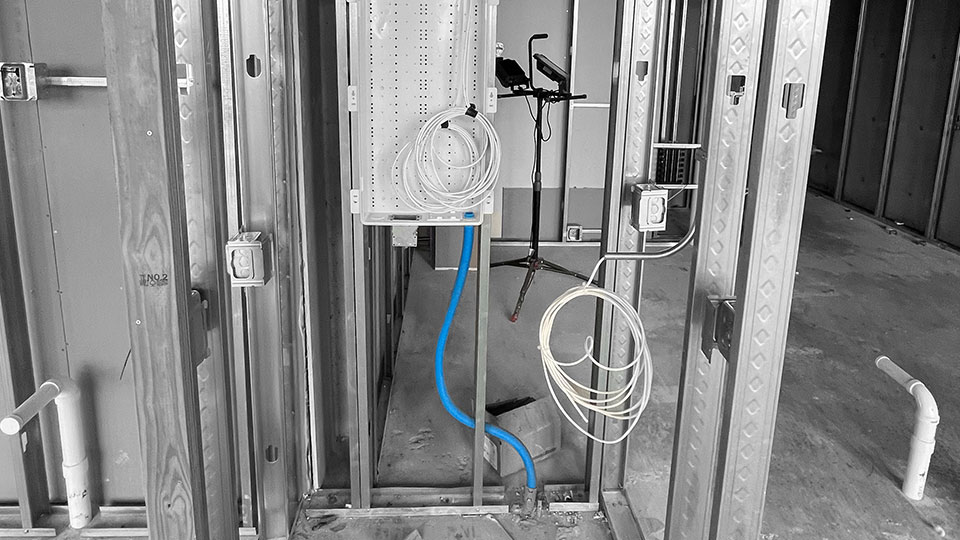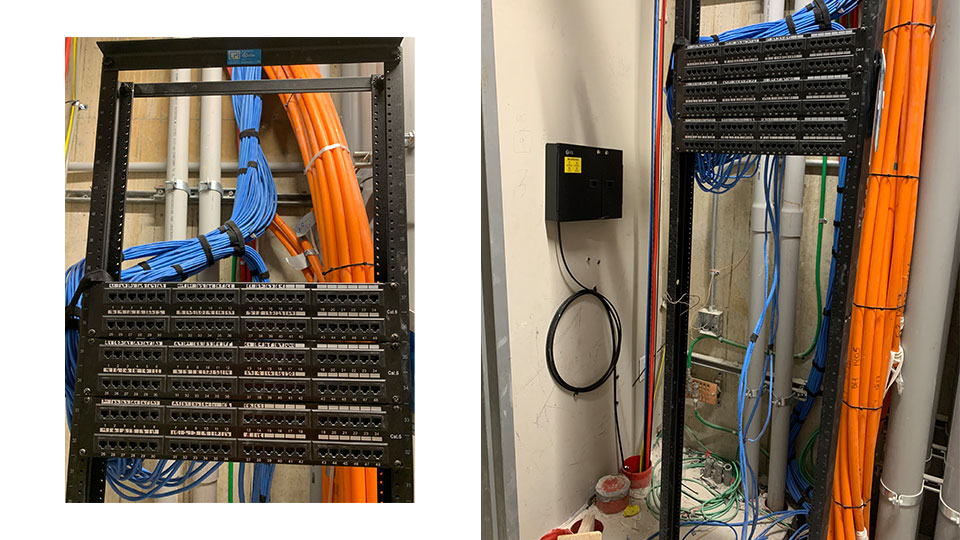
How Microducts Simplify MDU Tech Upgrades and Save Money Long-Term
We were contracted to lead a technology update for a relatively new MDU. Ahead of any work, we completed our standard building technology assessment to get a clear picture of the present infrastructure. During that process, we uncovered a costly oversight: the property lacked microducts or innerducts.

This omission, which was likely made during initial construction to cut costs, now complicates the property’s tech upgrades. Without these pathways, new wiring can’t just be easily (and cleanly) pulled through; instead, walls and ceilings need to be opened up—causing significant expense and inconvenience for residents. Think drywall and paint – it’s a whole thing.
The initial cost-saving decision? Minimal compared to today’s overhaul costs (see below).
While retrofitting these pathways now isn’t feasible due to space constraints, installing them during construction is almost always a smart investment. They simplify future upgrades, reduce costs, and can even boost the building’s resale value. More real estate buyers are factoring in low voltage optionality, which means modern infrastructure is increasingly appealing. Buyers are conducting comprehensive low voltage audits ahead of major purchases to see how ‘future-ready’ the property is—which includes, you guessed it, these pathways.

The Cost Comparison: Pay Now or Pay Later
Our project team recently conducted a comprehensive audit across a sampling of our projects in various markets, revealing a striking difference in costs:
- Initial microduct installation: approximately $350 per unit
- Overbuild costs later on: around $1,500 per unit
For MDU developers, investing in future-proofed infrastructure upfront not only saves money but also adds long-term value. By planning ahead, developers can avoid expensive retrofits down the line and enhance the building’s appeal to future buyers. Smart planning today leads to significant payoffs tomorrow, especially when it’s time to sell!
What are Microducts?
Microducts are flexible, non-metallic conduit tubes used in low voltage installations, particularly in MDUs. They are typically blue, earning them the nickname smurf tube, but can often times be orange. They serve as protective pathways for low voltage wiring, such as data, telecom, and security cables. They are often installed with pull strings, which facilitate the easy pulling of new cables through the tube when systems need upgrading or replacing, minimizing disruption and avoiding the need to tear down walls. This design ensures a streamlined, cost-effective solution for future infrastructure upgrades.
Benefits for MDUs
- Provides Owners with Optionality: These pathways provide flexibility for property owners. By installing these conduits during the construction phase, owners maintain the ability to upgrade or change wiring for systems like Managed WiFi, IoT, security, or future smart technologies without requiring extensive renovation.
- Small Investment with Massive Upside: Installing these pathways during construction is relatively inexpensive compared to the significant cost (and disruption) of retrofitting later.
- Make Future Upgrades Way Easier (& Cheaper): Without microducts, upgrading low voltage systems later could require cutting into walls and ceilings, adding thousands of dollars in labor, materials, and tenant disruption.
The True “Cost” of Skipping Pathways
- Invasive construction is often required for wiring upgrades, disrupting residents and causing downtime.
- Limited ability to install advanced systems can reduce the property’s appeal.
- Outdated infrastructure makes a building less competitive—to potential buyers and residents.
In short, these orange and blue pathways offer a cost-effective way to ensure MDUs remain adaptable to evolving technologies, protecting both owner investment and tenant satisfaction for the long term.
Recent blogs
4 Trends Reshaping Electronic Security (and Why They Matter to Owners)
The electronic security landscape is evolving fast, and if you haven’t looked closely in a while, you might be surprised by what’s changed. From cloud-based systems to smarter cameras, the next generation of access control and surveillance technology isn’t just more powerful – it’s more connected, efficient, and operationally intelligent. […]
Late-Stage Assistance: Turning Challenges into Wins
When most people think about engaging an owner’s representative for low voltage, they picture a long, steady partnership, years of planning, design, and coordination from day one. And that’s true for many of our projects. But sometimes, WhiteSpace gets called in late in the game. That’s exactly what happened on […]


